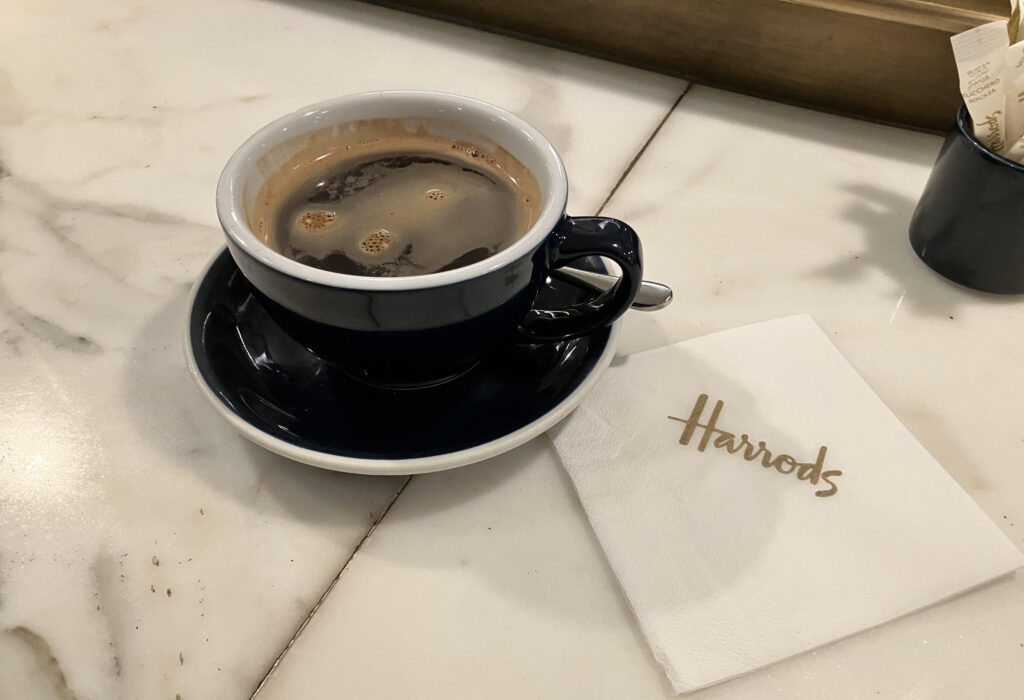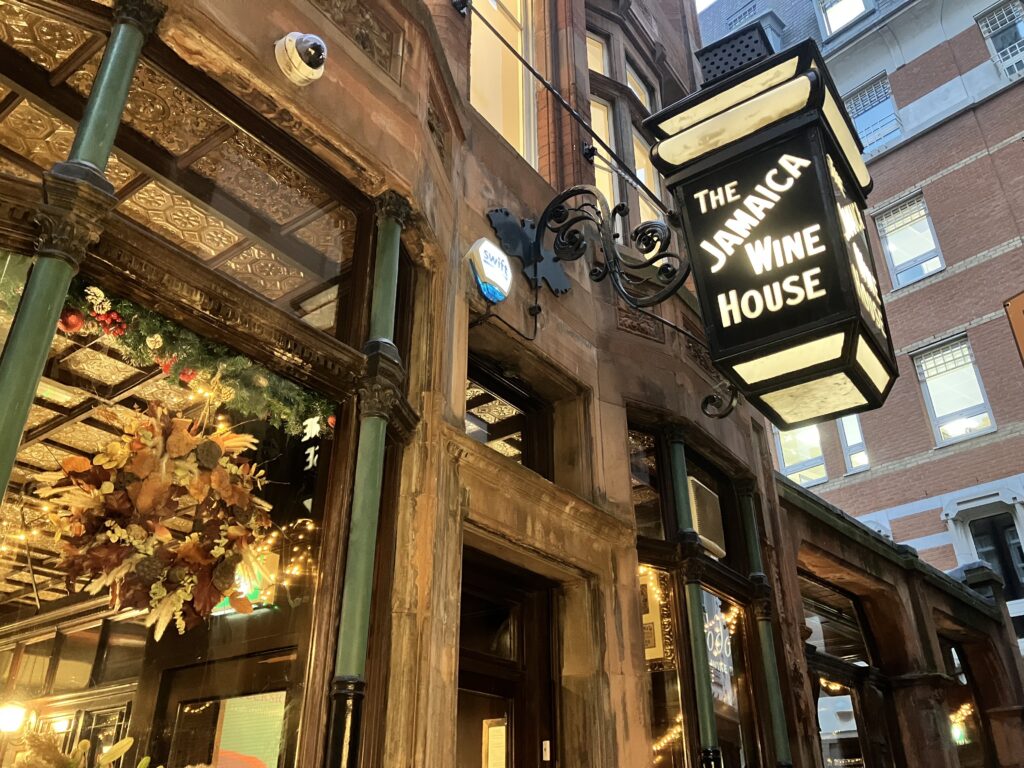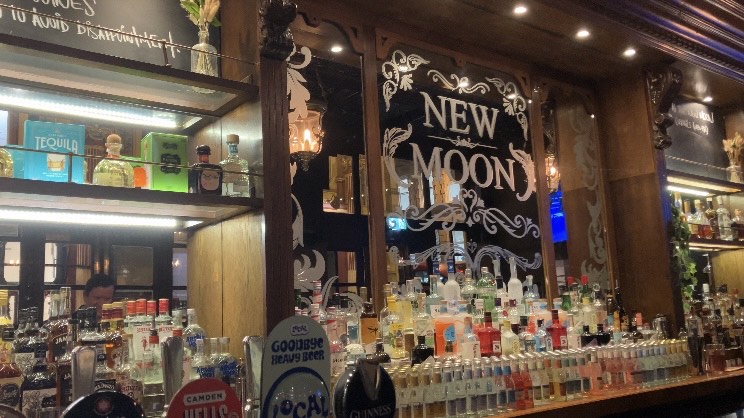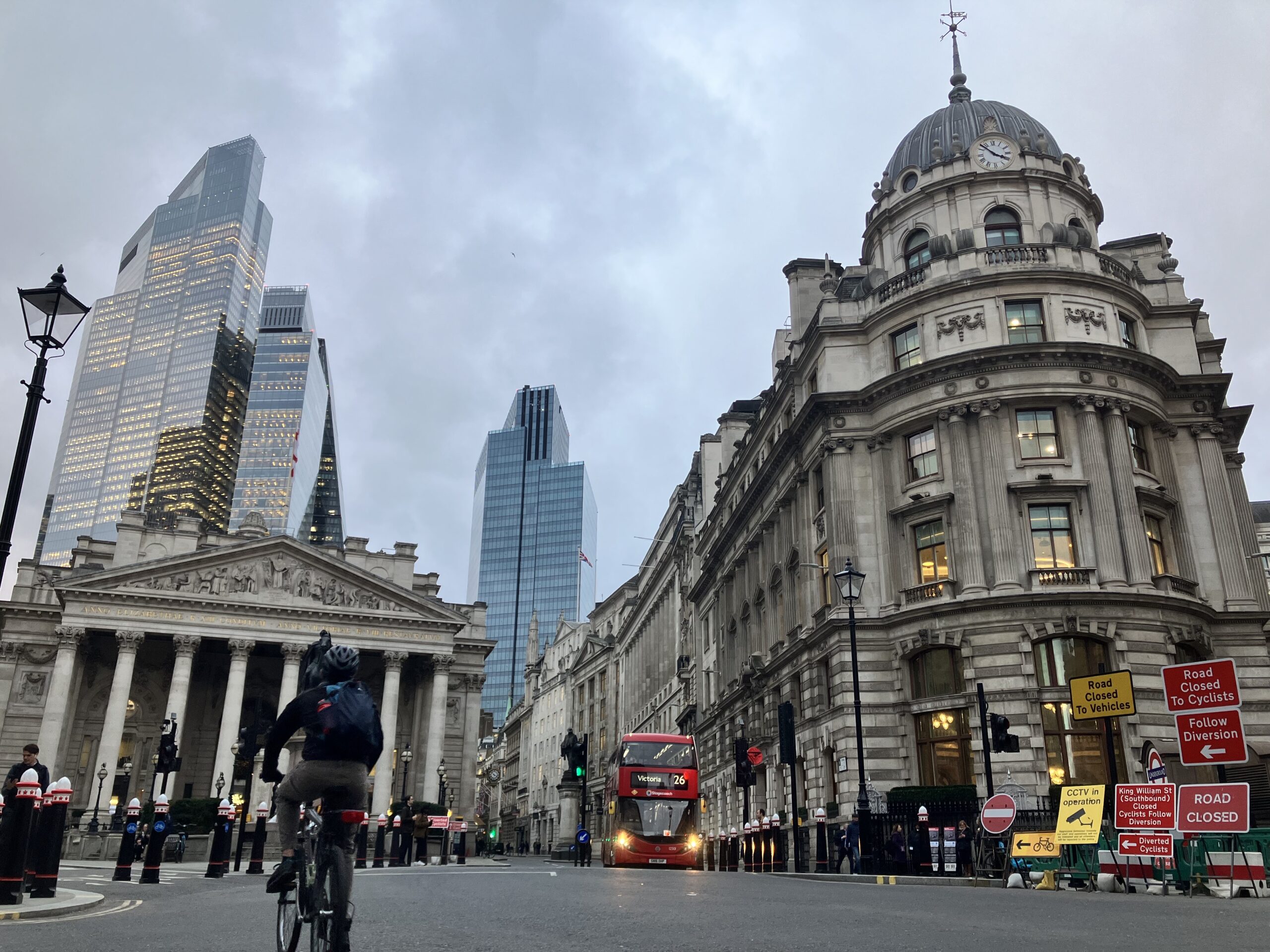I’m Dice, a Japanese resident living in London. These days, I find myself feeling a bit more excited whenever the sun comes out.
In this blog, I’ll be introducing the City of London, the world’s financial hub. While Tokyo also hosts a concentration of global financial institutions around areas like Tokyo Station and Kabutocho, the City of London has a much older and richer history. This post is perfect for those who want to learn more about the history of London’s financial district or enjoy a taste of that history by visiting recommended pubs around Bank station. I’ll be sharing some interesting facts and my top picks for pubs in the area!
The Beginnings of the City of London
Let’s start with the origins of the City of London.
The City of London, known today as a prestigious financial district, has built and maintained its status as one of Europe’s leading financial hubs for over 2,000 years. Its history begins in the 1st century AD when the Roman Empire established it as “Londinium.” Leveraging the commercial advantages of being on the River Thames, Londinium grew as a center for trade and logistics. The Roman roads and bridges constructed during this era laid the foundation for London’s future as a major commercial center. Although London faced a period of decline following the fall of the Roman Empire, it regained prominence after the Norman Conquest in 1066. By the 12th century, guilds had formed as trade associations, giving merchants self-governing rights and propelling London back into a thriving center of commerce.
From the 16th to the 17th century, London flourished as a hub for international trade and maritime commerce. During this period, the strength of the British navy grew, and institutions like the East India Company, founded in 1600, played a pivotal role in supporting overseas trade. This era saw London accumulate substantial wealth, spurring the rapid growth of banking and trade-related businesses.

Coffee houses form the world’s largest financial market
Many people are aware that the City of London is a global financial hub, but did you know that its rise was sparked by coffeehouses? Around 1650, when England lacked a reliable supply of clean water, people couldn’t drink safe water and would boil it, often with alcohol, for sterilization. As a result, most people were slightly tipsy most of the time!
This changed when coffee was introduced from Turkey, offering the British a sterilized, non-alcoholic beverage alternative. Following the opening of “Jacobs,” England’s oldest coffeehouse, on Oxford’s High Street in 1650, numerous coffeehouses began to appear in London. These establishments became gathering spots for merchants, investors, and financiers, where they exchanged news of voyages and trade, conducted transactions, and arranged insurance contracts. These coffeehouses eventually gave rise to formal trading rules for the world’s largest maritime market. The fact that today’s international financial systems were shaped in coffeehouses underscores their special significance in London’s history. By 1694, the Bank of England, the UK’s central bank, was established.
Now, some might wonder: isn’t Britain more famous for tea than coffee? By the late 1700s, coffeehouses were replaced by teahouses. While coffeehouses were predominantly frequented by men, teahouses appealed to women and families, marking a shift in social demand. Additionally, changes in tax policies led to a significant drop in tea prices, making it easier to brew and serve. These factors contributed to tea becoming more popular, a status it still holds today.

The Contemporary City of London
From the late 18th to the 19th century, the Industrial Revolution propelled the development of London’s financial district even further. The boom in industry led to a surge in both domestic and international trade, amplifying the importance of financial institutions. This culminated in the official establishment of the London Stock Exchange in 1811, which marked the formal structuring of the securities market.
Entering the 20th century, the City of London was significantly impacted by World War II. However, it reclaimed its status as a financial hub during the post-war recovery. The 1970s and 1980s saw a significant wave of financial liberalization in London. The pivotal “Big Bang” reforms of 1986 brought about the computerization of trading and spurred the influx of international capital, revolutionizing the financial landscape.
Today, the City of London wields global influence in areas such as financial services, insurance, fund management, and the foreign exchange market. Even after Brexit, the City has maintained its position as an international financial center, fostering growth through the emergence of Fintech companies and technological advancements. The present-day City of London refers to the area marked within the red outline on the map (cited from Google Maps, November 2024).

Three recommended PUBs around Bank Station
We’ve taken a brief look at the history of the City of London, but one of the true delights of London is enjoying a drink while soaking in this rich history! Without further ado, here are my top three recommended pubs around Bank, located in the heart of the financial district.
I also share the atmosphere of the Bank area and its pubs on my YouTube channel, so be sure to check it out!
The Jamaica Wine House
Founded in 1652 as London’s first coffeehouse, The Jamaica Wine House is renowned not just for its historical significance as a coffeehouse but also as a beloved pub. One of the best things about this pub is its friendly and generous service—when you ask for a beer recommendation, they often respond with, “Would you like a taste?” and let you sample a range of beers. After trying a few, I settled on a smooth and refreshing Saison that hit just the right note.

New Moon
Located at the entrance of Leadenhall Market, New Moon is a popular pub that’s bustling at any time of the day due to its prime location. You can order beers in half pints, starting from as low as £3.65, which is impressively affordable for a pub in the heart of the city! With its historical setting—Leadenhall Market being famously featured in Harry Potter—New Moon offers a perfect place to enjoy a drink while soaking in the ambiance of London’s financial district.
If you’re planning to visit Tower Bridge and its surroundings, be sure to check out my recommended half-day itinerary for exploring the area!

The NED
For those who want to enjoy their drink in an upscale setting, I recommend the pubs located at The NED. Situated on the grand floor of this five-star hotel, these pubs offer an elegant and sophisticated atmosphere perfect for sipping a drink in style. It’s not the kind of place for a casual beer but rather for those who prefer to take their time and relish their experience in a luxurious space. If you’re looking to make the most of the ambiance, consider ordering a cocktail instead of a beer for an elevated experience!

Conclusion
I hope you enjoyed this look into the City of London’s history and the recommended pubs around Bank station for those wanting to savor the local atmosphere while appreciating the area’s storied past. Although the high cost of living means that day-to-day life can be tight, indulging in a drink surrounded by the rich history of the city is certainly worth it now and then.
London is full of fascinating spots waiting to be discovered. I’ll continue to share helpful information for life in London, along with unique recommendations and model courses that only a local Japanese resident can provide. Be sure to check out my other blog posts for more insights!
Additionally, I share my experiences of living in London and traveling around Europe on YouTube. You’ll find real-life moments, stunning landscapes, and the genuine atmosphere that can’t quite be captured in writing. I’d love for you to visit my channel and join me on these adventures!
YouTube: https://www.youtube.com/@mriiy15




コメント